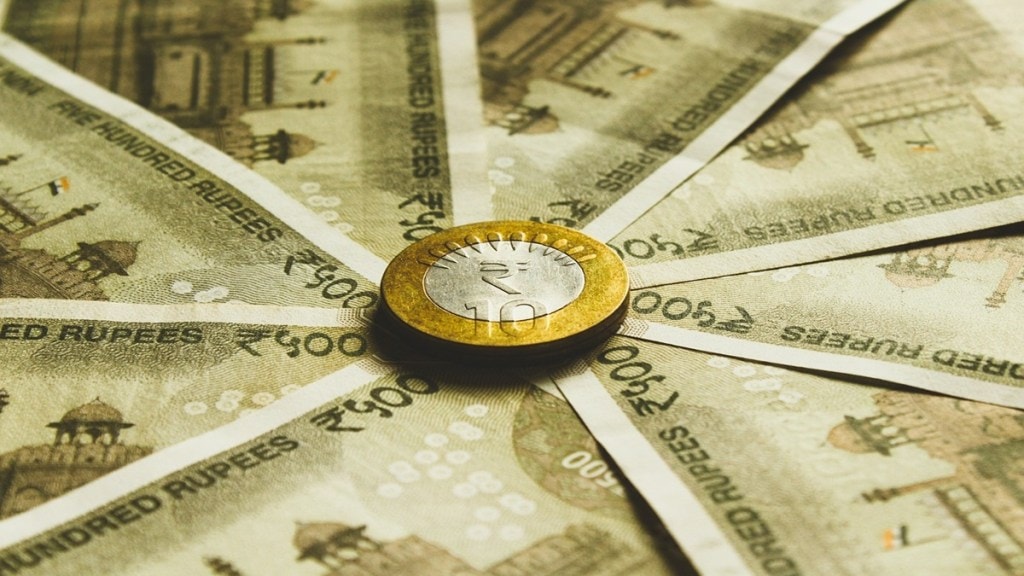With the fiscal fourth quarter earnings season almost here, Crisil Ratings said, the rupee’s sharp volatility against the US dollar in recent months, in the backdrop of continuing geopolitical uncertainties, is set to dent the earnings of some sectors by up to 250 bps in fiscal 2026. However, it added, the overall impact on the credit profiles of companies in its portfolio is seen as neutral.
The rupee moved from Rs 83.81 to the dollar on October 1, 2024, to Rs 87.40 on February 28, 2025, before appreciating to Rs 85.65 on April 3, 2025. This is against an annual rupee depreciation of 1-2 per cent seen over the preceding two years through September 2024. While there has been some appreciation of late, according to Crisil Intelligence, the rupee is expected to continue to depreciate against the dollar and settle at ~Rs 88 by end fiscal 2026.
Sectoral impact of depreciating rupee
The sharp depreciation in rupee impacts the sectors with sizable levels of imported/dollar-denominated raw materials and these will see a substantial increase in their costs without a corresponding increase in their revenues and hence their earnings are likely to be impacted adversely in the near-term. These sectors, Crisil said, include sectors such as complex fertilisers, airlines, oil and gas (refining and marketing), polyvinyl chloride (PVC) pipes and fittings, capital goods, pharmaceuticals (active pharmaceutical ingredients, or APIs) and renewable power.
In an analysis report, Crisil said that the extent of impact will depend on the exposure to foreign trade, ability to pass on the cost increase and hedging practices. There might also be player-specific impact across sectors based on the extent of unhedged foreign currency debt exposure.
On the other hand, a depreciating rupee could also drive up, to some extent, earnings of sectors such as information technology (IT), home textiles and marine foods, which are net exporters. The impact may not be material for other sectors with sizeable overseas trade exposure such as pharmaceuticals (formulations), chemicals, primary steel producers, gems & jewellery, ceramics, city gas distribution and edible oil due to the presence of a natural hedge and/or high propensity to pass on the incremental cost to customers.
The operating profitability of some segments of complex fertiliser manufacturers, such as di-ammonium phosphate (DAP), is expected to be adversely impacted by up to 200-250 bps given their sizable proportion of raw material imports. “The sector gets compensation in form of subsidies, the rates for which are announced twice a year, mitigating some impact of rupee depreciation during the year. Further, given the fungibility of DAP manufacturing capacity with other complex fertilisers, the overall impact will be absorbed to some extent,” Crisil said.
For airlines, while the impact of higher fuel cost for international refuelling will be offset largely by revenue from foreign currency ticketing sales, the net profits could be hit by 75-125 bps given sizable dollar-denominated lease liability obligations. That said, Crisil maintained, the impact could be mitigated by currency hedging given over 50 per cent of lease liability obligations are hedged. Additionally, lower fuel prices in dollar terms should offer some respite.
For oil and gas (refining and marketing), as the prices of key end-products such as diesel and petrol are regulated and fixed, the increase in crude oil cost (which is dollar-denominated) due to rupee depreciation could impact operating profitability by up to 125 bps. However, given the current favourable crude oil prices (average price of ~$75 per barrel over the past six months for the Indian basket), the profitability is trending above the historical average.
The PVC pipes and fittings sector imports about 50 per cent of its raw material. “While there is some ability to pass on the increase in prices to customers, this depends on demand strength and could come with a lag which could lead to a 50-100 bps impact on the operating profitability,”Crisil said. Additionally, volatility in raw material prices may result in inventory losses, as witnessed in the past.
On capital goods, given the diversity in the sector, segments that import many components could see profitability take a hit, while those that export finished products will be better placed.
Pharmaceuticals (APIs) and renewable power may see marginal pressure on profitability and project returns respectively as the majority of the raw materials — intermediates and modules, respectively — are imported.
On the positive side, the rupee’s depreciation will benefit sectors such as IT, marine foods (shrimp and prawn) and home textiles, where exports form a sizeable proportion of total revenue, while imports are negligible. Depending on whether the benefit is retained or passed on to customers, profitability could improve by up to 100 bps in the near-term, Crisil said.
As for other sectors such as pharmaceuticals (formulations), chemicals, gems & jewellery and ceramics, where foreign trade exposure remains sizeable, the impact of rupee depreciation is likely to be neutral given the presence of a natural hedge with sizeable presence on both import as well as export front.
For city gas distribution, primary steel and edible oil sectors as well, the impact will be minimal given high propensity to pass on any change in the input cost to customers.
Crisil said, “We will continue to monitor developments, engage with companies and assess the impact on their credit profiles on a case-by-case basis as appropriate.”

